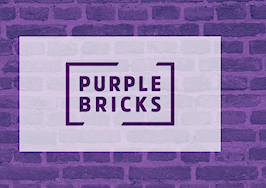This report is available exclusively to subscribers of Inman Intel, a data and research arm of Inman offering deep insights and market intelligence on the business of residential real estate and proptech. Subscribe today.
An outside observer could be forgiven for thinking homebuilders are in a tailspin.
Prices of construction materials and labor remain sky-high. Loans are increasingly expensive to take out. And public demand for new homes — which had boomed when mortgage rates were near all-time lows — is now falling off in a big way.
But these headwinds haven’t yet led builders to conduct the mass layoffs you might expect of an industry in a steep correction. Nor have they dissuaded investors from doubling down on the future of America’s largest homebuilding companies.
What gives?
To get a clearer picture of where things stand for builders — and where they’re headed — Inman compiled financial results from five of the nation’s largest publicly traded homebuilders, reviewed what their executives have been telling investors, and spoke with experts on the residential construction industry.
This review paints a picture of an industry in the midst of a stark and dizzying correction — but one primed for a potentially booming long-term future. Builders and trade contractors also appears to be holding off on mass layoffs for now, setting themselves up to have the labor and resources they need when the current market downturn reverses.

Robert Dietz | National Association of Home Builders
“The expectation is it’s going to be fairly short and fairly sharp, given the fact that this is occurring in the context of a labor shortage,” National Association of Home Builders Chief Economist Robert Dietz told Inman. “Even if you don’t have full activity as a builder right now, you’re likely to increase your activity levels within a quarter or two.”
That’s an expectation shared by a number of the largest builders.

David Auld | D.R. Horton
“We’re trying to align inventory levels with demand,” D.R. Horton President and CEO David Auld said in a recent earnings call. “And it ultimately comes back to, if you look at the long-term position of our industry, there aren’t enough lots or houses for the population and demand that we see taking place over the next three to five years.”
Still, recent months have been rough on builders. And it could get worse before it gets better.
An inflection point, by the numbers
For the five largest publicly traded homebuilding companies by market share, the pandemic has been a period of record profits.
D.R. Horton, Lennar, NVR, PulteGroup and Toll Brothers each essentially tripled their net earnings since the virus struck in 2020, according to Inman’s review of their financial filings.

Compiled by Daniel Houston
These profits realized by big builders are not necessarily representative of what smaller and mid-sized builders have seen, particularly in recent months, Dietz said. For one thing, larger companies are able to take advantage of their large volume of orders to negotiate better deals with vendors, which helps protect their profit margins, he said.
Small- to mid-sized builders, on the other hand, have been more likely to report the rising costs of construction goods and labor have squeezed their profits during the pandemic, Dietz said.
“There are definitely moments in the business cycle where the views of market conditions between a small builder and a big builder diverge,” he said.
But now, even the bigger builders are starting to feel the pinch. Softening demand for new homes appears to have finally cut into the profits of the two largest builders, D.R. Horton and Lennar. As seen in the final three months of 2022, D.R. Horton’s profits fell from well above $1.5 billion back to the nine-digit range.
Revenues can be a lagging indicator for homebuilders, whose sales often close months after they strike a deal with a buyer.
A more forward-looking idea of what future revenues might look like is captured by net sales — the number of new orders minus the number of cancelled contracts for each reporting period.

Compiled by Daniel Houston
For at least nine months, builders have undergone a steep decline in net sales. The fact that this decline has only begun to show in profits suggests some rough months may still be ahead.
For most of 2020, all of 2021 and the first part of 2022, these builders were awash in new orders and saw very few cancellations. This resulted in net sales that remained elevated well above prepandemic levels.
But after mortgage rates spiked in early 2022 and remained high for months, net sales plummeted again for builders. Sales levels aren’t quite as low as they fell during the early pandemic scare, when lockdowns were prevalent and a great deal of business activity came to a halt. But builders are now operating once again below normal historic levels.
And as is evident below, a big part of the equation is buyers getting cold feet — and backing out of existing deals.

Compiled by Daniel Houston
This is a stark shift. Cancellation rates have been spiking across the board, jumping well above normal historic levels for all five of the major builders.
It’s also notable how low these cancellation rates were for most of the pandemic. Before 2020, builders like Lennar, NVR and PulteGroup recorded around six new contracts for each buyer who backed out. By mid-2021, that figure rose to around 12 new contracts for each cancellation.
Now, cancellation rates for some builders are as high as 30 percent.
Everything so far suggests that the environment has been worsening for builders in recent months, and may be challenging for months to come. But what about the long-term prospects for new home construction?
That’s where viewpoints start to diverge. Investors have been incredibly bullish on the biggest homebuilders, really throughout the pandemic — but especially in recent months.

Compiled by Daniel Houston
The view above shows the average growth in stock value of D.R. Horton, Lennar, NVR, PulteGroup and Toll Brothers, since the end of 2019. These large builders have seen their stock values climb twice as quickly as the combined value of America’s 500 largest companies, as tracked by the S&P 500 index.
Clearly investors believe there will be plenty of demand for homes in the long run, even as sales suffer now.
The future outlook
To understand why some are so high on the future of home construction, it’s necessary to look at how we got here.
In the runup to the housing bubble that preceded the Great Recession, builders raced to create a glut of new-home inventory. Then, when the housing market crashed, they spent the next 15 years taking a much more cautious approach.
The result was a residential construction industry that underperformed its pre-bubble build pace by millions of homes, even as the population grew, more households formed and demand for housing rose.
Looking past the next few months to the years ahead, home inventory is expected to remain very limited in the wake of this “chronic housing production shortfall,” Lennar Executive Chairman Stuart Miller told investors an analysts on a recent earnings call.

Stuart Miller | Lennar
Miller said he believes the market is in the middle of a “fairly short-duration correction,” rather than a long-term downturn. And in the short run, lagging sales and rising cancellations could be somewhat offset by a fall in the price of building materials, which is already underway.
“While there is no doubt a lag in those [price] reductions coming through our reported numbers, there will also be no doubt a significant reduction coming, period,” he said.
At Toll Brothers, there are early signs that the reductions in net sales may be transitory as well. The company’s chairman and CEO, Douglas Yearley, said on an earnings call that both web traffic and foot traffic were only down 15 percent in the most recent quarter — a far cry from the builder’s 60 percent drop in net sales.

Douglas Yearley | Toll Brothers
“While many potential buyers are on the sidelines, they remain interested and may just be waiting for more clarity on the direction of mortgage rates and the overall economy before they transact,” Yearley said.
In the meantime, smaller builders that comprise most of the National Association of Home Builders’ membership are still bracing for a rough six months ahead. The trade organization’s builder confidence survey came in at a score of 35 out of 100 for the month of January, indicating that the prospects of present sales — and near-future sales — were relatively dim.
But those builders were actually more optimistic about the months ahead than they were in December, when the builder confidence score dropped to 31, capping off 12 consecutive months of decline.
January may well mark the moment where builders saw light at the end of the tunnel, Dietz told Inman.
“One thing we know in housing economics is that when you go through an interest rate tightening cycle, like we have recently, housing feels the pain first, and housing rebounds first,” Dietz said.













